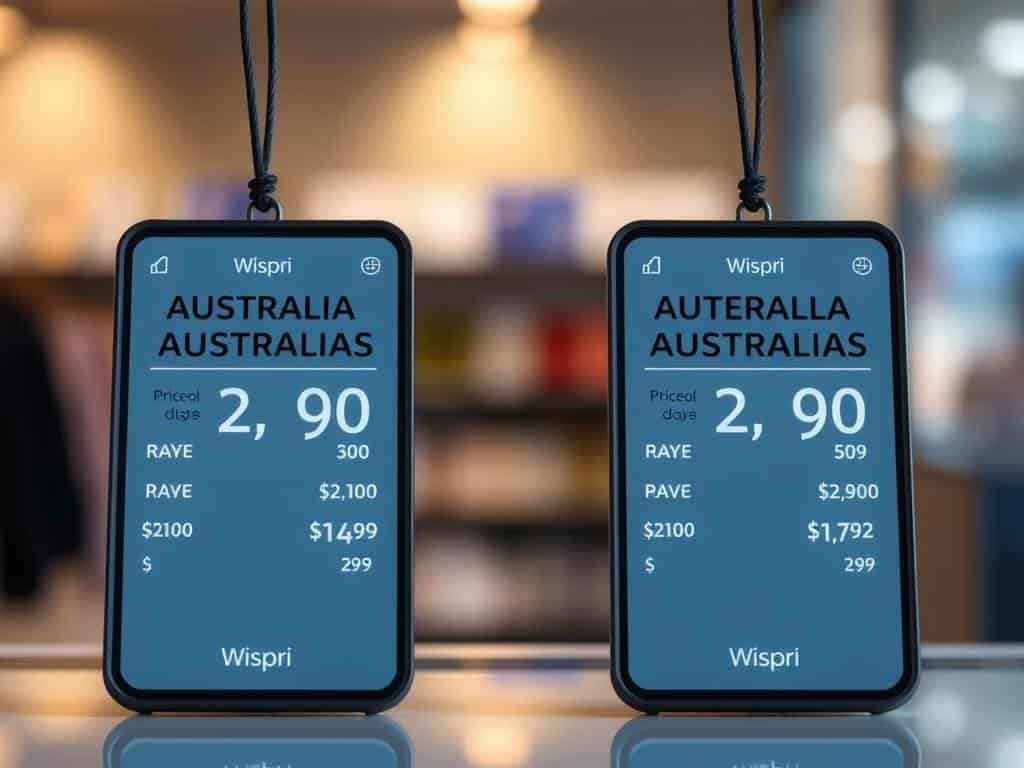The retail landscape in Australia has undergone significant changes with the entry of international players, creating both challenges and opportunities for consumers. The growth of online shopping has made it easier for shoppers to compare prices across different retailers.
Did you know that the global e-commerce market has seen a substantial growth, with sales reaching billions of dollars? This shift has led to a competitive market where local and international retailers compete to offer the best deals.
As a result, Australian shoppers are now faced with a multitude of choices, making it essential to make informed shopping decisions. Tools like Wispri, Australia’s leading price tracking platform, help smart shoppers save money by monitoring product prices across multiple retailers and sending instant alerts when prices drop.
Key Takeaways
- Comparing prices across local and international retailers is crucial for finding the best deals.
- The Australian retail market has become increasingly competitive with the entry of global players.
- Price tracking tools can help consumers make informed decisions and save money.
- Understanding the factors that influence pricing strategies is key to getting the best value.
- Shoppers should consider additional costs such as shipping when comparing prices.
The Australian Retail Landscape
The retail landscape in Australia is dominated by a handful of major companies, leading to a concentrated market with significant implications for pricing strategies and consumer choices. This concentration affects the overall growth of the retail sector and influences the Australian market‘s dynamics.
Major Australian Retailers and Their Market Position
Leading Australian retailers such as JB Hi-Fi, Harvey Norman, Myer, David Jones, and Bunnings hold substantial market shares. These companies have established strong competitive advantages through their brand recognition, extensive distribution networks, and strategic marketing. Their earnings reports often reflect the overall health of the retail sector and the broader economy.

Pricing Patterns and Sales Cycles in Australia
Australian retailers typically follow a pricing pattern characterized by higher baseline prices punctuated by strategic sales cycles. Key sales periods include Boxing Day, End of Financial Year, and Black Friday, during which retailers significantly discount their products. This pricing strategy allows retailers to maintain profitability while offering consumers periodic opportunities to purchase at lower prices, thus driving growth in sales volume.
International Retail Giants: What They Offer
The influx of international retailers in Australia has transformed the way consumers shop. With their global presence and diverse offerings, these retailers have significantly impacted the Australian retail landscape.
Popular International Retailers Available to Australians
Several international retailers have established a strong presence in Australia, including Amazon, ASOS, Zara, H&M, and Uniqlo. These retailers offer a wide range of products, from electronics and fashion to home goods, often with competitive pricing and innovative services.
- Amazon offers a vast marketplace with various products and fast shipping options.
- ASOS is known for its trendy fashion and convenient online shopping experience.
- Zara, H&M, and Uniqlo provide the latest fashion trends at affordable prices.
International Pricing Models and Discount Strategies
International retailers leverage their global scale to offer competitive pricing models. They employ various discount strategies, including flash sales, membership programs, and dynamic pricing algorithms. These strategies often differ from those used by local Australian retailers, providing consumers with more options and better value.
Australian vs International Retailers: Key Differences
When comparing Australian and international retailers, several key differences emerge that can significantly impact a consumer’s shopping experience. These differences are particularly notable in terms of pricing, product quality, warranty policies, and customer service.
Price Comparisons Across Electronics, Fashion, and Home Goods
Price comparisons between Australian and international retailers reveal significant variations across different product categories. For instance, electronics are often cheaper when purchased from international retailers, while fashion items may be more competitively priced in the local market. Home goods can vary, with some international retailers offering better deals on specific items. Consumers should research and compare prices to find the best deals.

Quality, Warranty and Customer Service Considerations
Beyond price, other factors such as product quality, warranty policies, and customer service play a crucial role in the overall shopping experience. Australian retailers are governed by Australian Consumer Law, providing a certain level of protection for consumers. In contrast, international retailers may operate under different regulatory frameworks, potentially affecting warranty and customer service experiences. Consumers should consider these factors when deciding where to shop.
Hidden Costs When Shopping Internationally
Beyond the initial price tag, international shoppers face several hidden costs. When Australians shop from international retailers, they often encounter additional expenses that aren’t immediately apparent. These costs can significantly impact the overall price of the purchase.
Shipping, Import Duties, and Currency Conversion Fees
Some of the key hidden costs include shipping fees, import duties, and Goods and Services Tax (GST) on purchases over $1000. For instance, if an Australian consumer buys an electronic device from an international retailer, they might have to pay a shipping fee, which can vary depending on the shipping method chosen. Additionally, import duties can be applied, which are taxes on imported goods. Currency conversion fees can also add to the cost, as the exchange rate might not be in the consumer’s favor.

- Shipping fees can range from $10 to $50 or more, depending on the shipping method.
- Import duties can be up to 5% of the purchase value, depending on the type of goods.
- Currency conversion fees can add an extra 2-3% to the purchase price.
Return Policies and Consumer Protection Differences
International return policies can be complex, with consumers often bearing the cost of return shipping. Moreover, restocking fees might apply, which can be a percentage of the purchase price. Consumer protection laws also vary between countries, potentially leaving Australian consumers vulnerable when purchasing from retailers not bound by Australian Consumer Law.
- Return shipping costs can be substantial, sometimes equaling the original shipping fee.
- Restocking fees can range from 10% to 25% of the purchase price.
- Consumers may face challenges in resolving disputes with international retailers.
Understanding these hidden costs is crucial for making informed purchasing decisions when shopping internationally.
Smart Shopping with Price Tracking Technology
With the rise of online shopping, price tracking technology has emerged as a game-changer for Australians looking to save money. This innovative tool allows consumers to make data-driven purchasing decisions, ensuring they get the best deals available in the market.
Wispri: Australia’s Leading Price Tracking Platform
Wispri is revolutionizing the way Australians shop online by providing a comprehensive price tracking solution. With its AI-powered platform, Wispri monitors prices across major Australian retailers, including Amazon Australia, eBay, JB Hi-Fi, Harvey Norman, Officeworks, and Bunnings.
Key Features and Retailers Covered
Wispri’s platform boasts several key features that make it an indispensable tool for smart shoppers. These include AI-powered price monitoring, customizable price drop alerts, and a user-friendly dashboard. By tracking prices across multiple retailers, Wispri helps consumers identify genuine sales and avoid fake discounts.
Free vs PRO Subscription Benefits
Wispri offers both free and PRO subscription options. The free version provides basic price tracking features, while the PRO subscription unlocks additional benefits, including advanced price analysis and enhanced customer support. By upgrading to Wispri PRO, users can further maximize their savings potential.
Timing Your Purchases for Maximum Savings
By leveraging Wispri’s historical price data, consumers can strategically time their purchases to coincide with genuine sales events. This data-driven approach enables shoppers to make informed decisions, ensuring they get the best deals on products from both Australian and international retailers.
Conclusion: Making Informed Shopping Decisions
As the retail landscape continues to evolve, understanding the differences between Australian and international retailers is crucial for making informed purchasing decisions. The choice between local and international retailers depends on multiple factors, including product category, timing, and individual priorities.
Key Considerations: When comparing Australian and international retailers, it’s essential to consider the total cost of purchase, including shipping, taxes, and potential return costs. Tools like Wispri empower consumers to make informed decisions by providing price transparency and revealing genuine savings opportunities.
To optimize your shopping strategy, consider developing a strategic approach that leverages the strengths of both local and international retailers. This might involve signing up for price tracking services and being mindful of sales cycles both locally and internationally.
By understanding the advantages and disadvantages of each, Australian consumers can make more informed decisions, ultimately leading to better deals and a more satisfying shopping experience. With the right strategy and tools, shoppers can navigate the complexities of the retail market and achieve significant savings.

